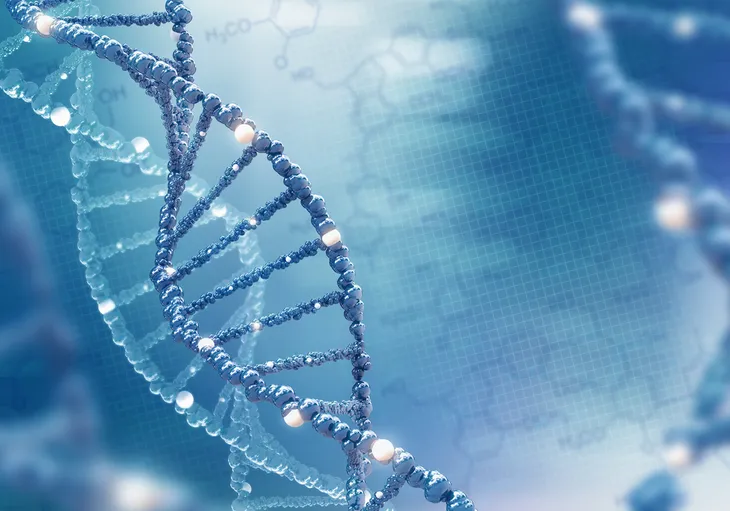- Leiomyosarcoma is a rare type of cancer that grows in the smooth muscles.
- The symptoms you experience will depend on how large the tumor is and its location.
- While there is no known way to prevent leiomyosarcoma, there are treatment options available that aim to destroy the cancer.
- If detected and treated early, leiomyosarcoma can be cured but if it’s detected in the later stages, the treatment is more difficult and the prognosis is not always good.
Leiomyosarcoma isn’t a well-known type of cancer, and odds are, you haven’t even heard of it until your (or your loved ones) diagnosis. This is because it’s a very rare form of cancer. It’s also a type of sarcoma which means it grows on tissues that connect and give strength to your body. Some examples include the muscles, tendons, cartilage, bones, nerves, and blood vessels. Furthermore, leiomyosarcoma only makes up for 5- to 10-percent of all sarcomas.
A cancer diagnosis is never easy and it can be scary and overwhelming. By getting informed, you can help ease your mind, learn what to expect, and better advocate for your health. Here’s what you need to know about leiomyosarcoma, including its common symptoms, causes, treatment options, and the general outlook.
What Is Leiomyosarcoma?
The National Cancer Institute explains that leiomyosarcoma is a type of cancer that grows in the smooth muscles such as your intestines, stomach, bladder, and blood vessels. Females can also develop it in their uterus. It’s also an aggressive type of cancer, meaning it grows quickly.
Leiomyosarcoma often starts in the uterus or abdomen and begins as a growth of abnormal cells that quickly grow and destroy nearby normal tissue. The symptoms you experience will depend on where the cancer first develops.
Types of Leiomyosarcoma
The Cleveland Clinic says leiomyosarcoma can be categorized into four types, including:
- Somatic soft tissue LMS: is a type that affects your body’s connective tissue. It’s also the most common form.
- Cutaneous or subcutaneous LMS: is a rare type of leiomyosarcoma that affects the piloerector muscles in your skin. These muscles are located in the skin and eyes and are responsible for generating sensations like making your pupils dilate and giving you goosebumps.
- Vascular Origin: is a type of leiomyosarcoma that develops in the major blood vessel (such as the pulmonary artery, inferior vena cava, or peripheral arteries). It’s also the rarest type of LMS.
Leiomyoma vs. Leiomyosarcoma: What’s the Difference?
Leiomyoma and leiomyosarcoma both sound like types of cancer but they are different. For starters, leiomyoma are “benign (non-cancerous) fibroids that occur in the smooth muscles,” explains the Cleveland Clinic. The source says, they can be problematic, however, the key difference is that they don’t spread to other areas of your body.
Leiomyosarcomas, on the other hand, are cancer and they can spread throughout your body. Since the cancer travels through your bloodstream, it can spread to any soft tissue in your body, explains the source.
Who’s at Risk?
While leiomyosarcoma can affect both men and women, it develops in women more often. It’s also more common in individuals over the age of 50, however, anyone of any age can develop it too.
The National Cancer Institute says it’s estimated that only 20 to 30 children are diagnosed with this type of cancer each year in the United States. Furthermore, “LMS of the uterus affects about 6 per 1 million people per year in the United States,” says the source. If you’re concerned about your risk of LMS, talk to your doctor.
Common Symptoms of Leiomyosarcoma
It’s possible to not experience any symptoms in the early stages. However, as the tumor grows you may begin to develop noticeable symptoms.
Symptoms of leiomyosarcoma will vary and depend on how large the tumor is and its location. That said, some common symptoms to be on the lookout for include, pain, fatigue, nausea, vomiting, weight loss, abdominal bloating, fever, and a lump under your skin.
Symptoms in Other Areas of the Body
As we mentioned, symptoms can vary depending on the location of the cancer. For example, if leiomyosarcoma develops in your digestive system, you may experience abdominal pain, nausea, vomiting, loss of appetite, or black stools (which indicates there is blood in your stool).
Another example is uterine leiomyosarcoma, which may cause you to experience frequent urination, abnormal vaginal bleeding, and vaginal discharge. Always be on the lookout for abnormal symptoms and notify your doctor if anything develops.
What Causes Leiomyosarcoma?
Unfortunately, it’s not quite known what causes leiomyosarcoma. It could be hereditary, which means you inherit the altered genes from your parents or your genes could mutate on their own, which can cause the cells to grow out of control.
The National Cancer Institute says that scientists are always working hard to understand why cancer forms. What they do know is that LMS may be associated with some genetic conditions. Some of these include nevoid basal cell carcinoma syndrome, Werner syndrome, Gardner syndrome, tuberous sclerosis, hereditary retinoblastoma, Li-Fraumeni syndrome, and neurofibromatosis type 1.
When to See a Doctor
If you develop any symptoms of leiomyosarcoma, or have a gut feeling something is wrong, never hesitate to talk to your doctor. If your doctor suspects LMS, there are several tests they can use to help confirm a diagnosis.
For example, your doctor may use imaging tests such as computed tomography (CT) scan, magnetic resonance imaging (MRI), positron emission tomography (PET) scan, or angiography to look at the tumor. To confirm the tumor is cancerous, they will also likely take a small sample (biopsy) with a needle. It’s vital that you get a correct diagnosis in order to get the proper treatment.
Treating Leiomyosarcoma
Unfortunately, there is no known way to prevent leiomyosarcoma, says the Cleveland Clinic. However, you can do your best to reduce your risk by avoiding risk factors such as exposure to radiation and certain viral infections (such as human herpesvirus 8).
Once you’ve been diagnosed with leiomyosarcoma, your health team will come up with the best treatment plan for you. Treatment may include targeted drug therapy, surgery, and others. But the treatment you receive will depend on the location and size of the tumor. Next, let’s take a look at what some of the treatment options entail.
 Shutterstock/one photo
Shutterstock/one photoTreatment: Surgery
The National Cancer Institute says surgery is the best treatment option for leiomyosarcoma. “If all of the tumor is removed, there is a good chance of LMS being cured,” says the source. However, if some cancer cells are left behind, there’s an increased chance that cancer will come back in the same spot or spread to another area in the body.
While the ultimate goal of surgery is to remove all of the cancer, in some cases, it can be difficult, especially if the cancer is very large or has spread to other nearby organs.
As with all treatment options, there are some side effects to be aware of. With surgery, there may be pain and an increased risk of infection, blood clots, heavy bleeding, and an allergic reaction to the anesthesia. Your doctor will help you weigh the pros and cons and help you prepare for treatment.
Treatment: Chemotherapy
Another possible treatment option is chemotherapy. It’s a powerful drug treatment that aims to destroy cancer cells. Chemotherapy may be considered if the tumor is too large, or if the cancer cells have spread to other parts of the body. In this case, it would be used in combination with surgery.
Chemotherapy also has side effects. Some may include tiredness, hair loss, nausea, vomiting, weight changes, constipation, diarrhea, and changes in mood.
Treatment: Radiation Therapy
Radiation therapy may also be considered in addition to surgery. It uses powerful energy beams to destroy cancer cells. During a session, you can expect to lie on a table while the machine moves around directing energy beans into your body. The Mayo Clinic says, “Radiation therapy might be recommended after surgery to kill any cancer cells that might remain.”
Before receiving radiation therapy, your doctor will talk to you about the possible side effects you may experience after your session. Some of these may include tiredness, nausea, and dry or itchy skin.
The Outlook
The good news is, if detected and treated early, leiomyosarcoma can be cured, says the Cleveland Clinic. However, when the cancer is detected in the later stages, the treatment is more difficult and the prognosis is not always good.
Every case is different. The National Cancer Institute says ultimately, your prognosis will depend on a variety of factors, including where the tumor is located in your body, if the cancer has spread, and how much of the tumor is taken out during surgery. Talk to your doctor to find out what the prognosis looks like for you.















